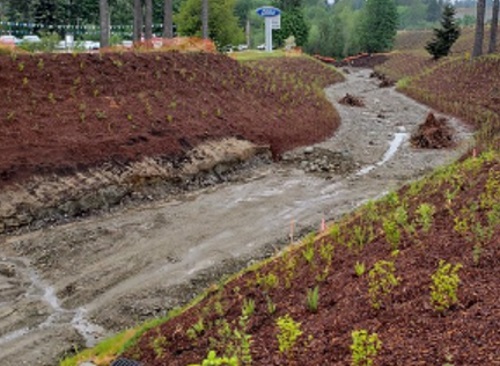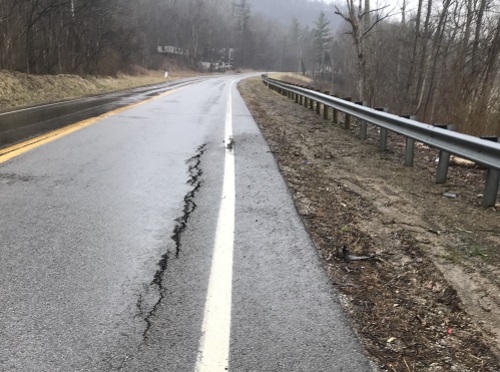FEDERAL ACTION
Federal, State Agencies Ramping Up Pedestrian Safety Efforts – AASHTO Journal
Democrats Scramble for Climate Options After Manchin Rejects Clean-Energy Plan – New York Magazine
State-level carbon tax climate agreement ‘having a hard time getting off the ground’ – Fox News
COVID-19
TSA says 40 percent of workforce unvaccinated ahead of November deadline – The Hill
Mayor Eyes COVID Vaccine Mandate for Airport Arrivals During Mardi Gras Season – Nola.com
Should Passengers Be Vaccinated or Tested to Fly Within the U.S.? – New York Times
How recovery from COVID-19’s impact on energy demand could help meet climate targets – International Institute for Applied Systems Analysis
NEPA
Udall Foundation and Udall Center Hosting Two Virtual Forums on Engagement and Consultation in the NEPA Process – Udall Foundation
INFRASTRUCTURE RESILIENCE AND SUSTAINABILITY
Rural Alaska needs new bridges as permafrost thaws and crossing river ice gets riskier – the infrastructure bill is only a start – The Conversation
Michigan must better prepare for electric vehicles to maintain mobility leadership, report says – Detroit News
One-fourth of US infrastructure is at risk of floods. These 4 states are in the most peril. – USA Today
MBTA plans removal of buses’ overhead wires and a fleet overhaul; transit group isn’t aboard – Cambridge Day
Governor Murphy and NJ TRANSIT Announce Portal North Bridge Project Construction Award – State of New Jersey Governor’s Office (Press release)
AIR QUALITY
Southern New England Lawmakers Rally in Support of Initiative to Reduce Transportation Emissions – ecoRI News
MTD Unveils Zero Emission Fleet Technology – Champaign-Urbana Mass Transit District
CDOT aims to be “at the forefront” with greenhouse gas rules that would have far-reaching impact – Denver Post
LA’s Busy Anchorages Attract Environmentalists’ Scrutiny – Maritime Executive
Make electric vehicles lighter to maximize climate and safety benefits – Nature (Commentary)
ENVIRONMENTAL JUSTICE
Native American tribes push to get Biden’s infrastructure bill passed – NPR’s Morning Edition
New York vs. New Jersey: Law, Equity and Politics – Railway Age
NATURAL RESOURCES
A climate specialist sees ‘managed retreat’ from the coast a solution for Long Island and beyond – WSHU Radio
Researchers work to better understand possible environmental impacts of fracking – Scripps Media
CULTURAL RESOURCES
Tourism officials say California, Nevada border traffic jams need to be addressed – KSNV-TV
How France Turned the Humble Roundabout Into a Showcase for Art – CityLab
HEALTH AND HUMAN ENVIRONMENT/ACTIVE TRANSPORTATION
City designs Neighborhood Bikeway in Billings to make biking and walking safer – KVTQ-TV
As e-mobility booms, safety challenges grow – New York Times
WSDOT working to improve state’s sidewalk network, address mobility concerns – KIRO-TV
Separate paths on W&OD Trail for cyclists and pedestrians unveiled in Falls Church – Tysons Reporter
New Underpass For Cyclists And Pedestrians Provides Important Connection In West St. Paul – WCCO-TV
Accessible trail to be added in Waterworks trail renovations in Montana – KWYB/KFBB/KTMF-TV
Mount Pocono, Pennsylvania aims to make streets safer for pedestrians – WBRE/WYOU-TV
TRB RESOURCES/ANNOUNCEMENTS
FEDERAL REGISTER NOTICES
National Chemical Transportation Safety Advisory Committee; November 2021 Teleconference – Coast Guard (Notice)
Announcement of the Board of Directors for the National Environmental Education Foundation – EPA (Notice)
National Environmental Justice Advisory Council; Notification for a Virtual Public Meeting – EPA (Notice)
White House Environmental Justice Advisory Council; Notification of Virtual Public Meeting – EPA (Notice)
Public Meeting/Notice of Availability for Proposed Air Tour Management Plan at Golden Gate National Recreation Area; Muir Woods National Monument; San Francisco Maritime National Historical Park; and Point Reyes National Seashore – FAA (Notice)
Takes of Marine Mammals Incidental to Specified Activities; Taking Marine Mammals Incidental to the Parallel Thimble Shoal Tunnel Project in Virginia Beach, Virginia – NOAA (Notice; proposed incidental harassment authorization; request for comments on proposed authorization and possible renewal)



